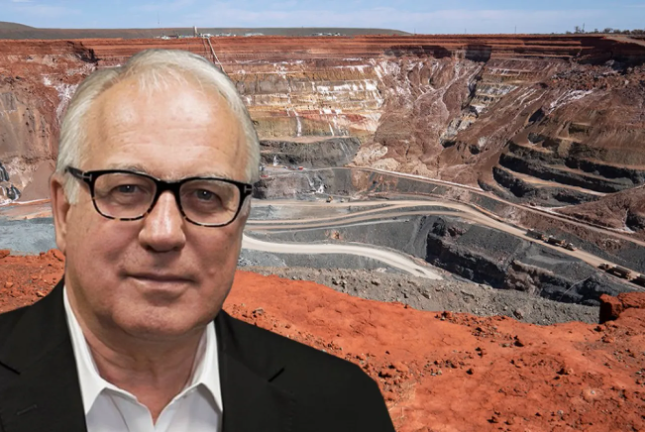
Australian astronomer Lister Staveley-Smith told Xinhua in an interview that he hoped to see links between Australian and Chinese scholars deepen through face-to-face collaborations, which are very helpful in enabling new scientific projects.
A hybrid conference was held in Perth, Western Australia from July 31 to Aug. 2 to commemorate the 60th anniversary of the China-Australia Astronomy Cooperation.
Hosted by Australia-China Consortium for Astrophysical Research (ACAMAR), the workshop brought together members of the Australian and Chinese astronomy communities to discuss all areas of astronomical collaboration.
As the chair of ACAMAR, Staveley-Smith introduced that this was the ninth edition of the workshop to have been held since 2016, which normally alternated between China and Australia.
An exciting theme this year was new discoveries about cosmic radio bursts made by researchers in the two countries, said Staveley-Smith.
“Massively powerful bursts of radio emission have been precisely located to compact objects in galaxies more than 7 billion light years away. One of the co-discoverers and Shaw Prize co-recipient, Professor Matthew Bailes, was able to attend ACAMAR 9 and give an account of the early discovery history,” he added.
In the eyes of Staveley-Smith, much of the cooperation between Australian and Chinese experts is based on exchanges of ideas and techniques related to astrophysics and cosmology.
“Exchange of ideas between people and across disciplines has always resulted in progress in science. These exchanges have now been occurring without hindrance for 60 years,” he said.
The ACAMAR chair noted that the signing of collaboration agreements between government departments, the Chinese Academy of Sciences and Australian astronomy institutions in the period following the 2010 Shanghai Expo was very important in ushering in an era of cooperation.
That yielded solid results, including the deepening scientific cooperation relating to the giant FAST (Five-hundred-meter Aperture Spherical Radio Telescope) in China’s Guizhou Province, which was completed in 2016 and began important scientific observations in 2020.
Looking to the future, Staveley-Smith expected more exchanges to be achieved through specialized workshops, training sessions, visiting scholar programs and student exchanges.
“An undoubtedly strong trend is our mutual interest in the Square Kilometre Array Observatory (SKAO) telescopes in Western Australia and South Africa and our joint desire to deliver high-quality scientific SKAO data products to our respective scientific communities,” he said.
According to the expert, this will build on existing cooperation on projects associated with the FAST, MWA (Murchison Widefield Array), and ASKAP telescopes that are already operational.
“More cooperation in optical astronomy would be welcome as our two communities both seek better access to large optical telescopes to complement strengths in radio astronomy,” said Staveley-Smith.
Lister Staveley-Smith,born 1959, Edinburgh, UK, speaks about his parents; his early childhood; his interest in things mechanical; his schooling; studying in Nairobi; his favourite subject physics; studying physics at university; his interest in astronomy; his influences; attending Trinity College at Cambridge University; Martin Rees; John Baldwin,; his interest in experimental work; his PhD at Jodrell Bank; Professor Rod Davies; his career path; being appointed Assistant Director of the Astrophysics Department at the Australia Telescope National Facility (ATNF); working with Ron Ekers and Richard Manchester; research culture at the ATNF; his research on radio supervona remnant; definition of dwarf galaxies; importance of studying the Large Magellanic Cloud (LMC) and the Small Magellanic Cloud (SMC); surveys carried out by Australian astronomers before (1995); UK Schmidt, radio and the Molongo Cross surveys; Parkes 21 cm multibeam receiver; the Square Kilometre Array (SKA) finishing date (2020); the partners in the SKA project; his research strategy; his postgraduate students; differences between Labor and Liberal policies on science; strengths of Australian astronomy and its future; his major achievements.



